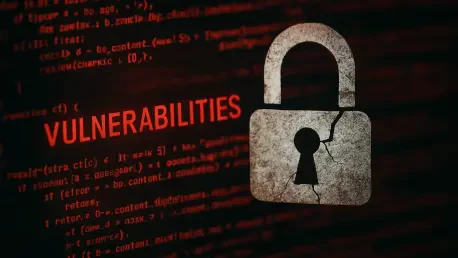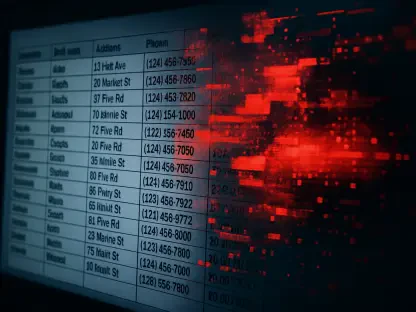In an increasingly digital world, cybersecurity remains a critical concern, particularly for U.S. government agencies that handle sensitive data and vital infrastructure. A recent report by Veracode highlights a pressing issue termed “security debt,” describing the backlog of unresolved software vulnerabilities within these agencies. This situation leaves them susceptible to cyber threats, as nearly 80% of these institutions harbor vulnerabilities more than a year old. Alarmingly, 55% of these are classified as high-risk. The time taken by government entities to rectify half of their vulnerabilities averages 315 days, trailing behind both public and private sectors, which take approximately 252 days.
The Roots of Security Debt
Outdated Systems and Legacy Frameworks
The persistence of security debt within government agencies can largely be attributed to their reliance on outdated systems built on legacy frameworks. These archaic structures are no longer supported by developers, making updates and security patches challenging to implement. Consequently, these systems become breeding grounds for vulnerabilities that cybercriminals can exploit. In many cases, agency systems lack the comprehensive visibility needed to effectively detect and address these issues in a timely manner. This absence of integration capabilities creates significant oversight, exacerbating potential security risks. As a result, agencies are often left grappling with vulnerabilities that snowball into more critical threats over time.
Adding to the complexity, government agencies often operate on constrained budgets and limited personnel resources. This financial pressure has been intensified by recent budget cuts and job losses across federal establishments. With fewer resources at their disposal, agencies struggle to allocate sufficient engineering resources for resolving security flaws. Inefficient processes further contribute to the challenge, as the emergence of new vulnerabilities frequently outpaces efforts to address them. The lack of proactive measures to modernize digital infrastructure compounds these issues, making it imperative for agencies to find innovative solutions to tackle security debt effectively.
Third-Party and Open-Source Software Risks
Notably, a significant portion of security debt stems from third-party and open-source software used within government networks. Although these applications represent only 10% of the overall security debt, they constitute a staggering 70% of the critical security vulnerabilities. The reliance on such software introduces complexities in managing security, as it often involves multiple contributors from various sources. The decentralized nature of open-source software presents challenges in maintaining consistent security standards. Introduced vulnerabilities in this context can have far-reaching consequences if not addressed promptly. The 2024 breach of the Treasury Department serves as a stark reminder of the tangible risks generated by unresolved vulnerabilities in third-party applications.
Furthermore, agencies must contend with security debt derived from outdated third-party components that are deeply integrated into their systems. Ensuring that these components are frequently updated and scrutinized for vulnerabilities is essential in mitigating potential security threats. Experts within the industry emphasize the importance of prioritizing critical vulnerabilities to prevent them from evolving into pervasive security issues. By focusing on streamlining the process of identifying, rectifying, and monitoring security flaws from external sources, government agencies can significantly reduce their exposure to cyber threats.
Addressing Security Debt
Proactive Strategies and Prioritization
Addressing the security debt crisis demands strategic approaches that prioritize critical vulnerabilities without compromising overall security integrity. Experts advocate for a proactive stance, emphasizing the need for government agencies to focus on the most significant vulnerabilities posing immediate threats. Prioritization involves assessing the risk factors associated with each vulnerability, ensuring that limited resources are channeled into areas where they can make the most substantial impact. Effective prioritization entails adopting a risk-based approach, leveraging data analytics, and threat intelligence to guide decision-making processes. By streamlining the allocation of resources toward high-risk vulnerabilities, agencies can better safeguard their infrastructure against potential breaches.
Another key strategy involves enhancing collaboration within the cybersecurity ecosystem, fostering communication and information sharing among agencies, industry partners, and technology providers. By creating an interconnected network of stakeholders, government entities can exchange valuable insights and best practices, promoting a unified front against cyber threats. Such collaboration can also facilitate the development of innovative solutions tailored to the unique challenges faced by government infrastructure. Iterative improvement processes allow agencies to adapt and evolve their cybersecurity protocols, addressing emerging threats in real-time. This collective effort presents a promising avenue for tackling the intricate and dynamic landscape of cybersecurity.
Resource Allocation and Technological Integration
Resolving the security debt crisis also hinges on effective resource allocation and technological integration. Agencies must allocate adequate resources to bolster their cybersecurity defenses, even amidst budget constraints. By investing in modern tools and technologies that enhance visibility and integration, agencies can gain deeper insights into their security posture. Such investments can improve the ability to detect and remediate vulnerabilities in real-time, minimizing exposure to potential threats. Moreover, leveraging cutting-edge technologies like artificial intelligence and machine learning can automate various aspects of cybersecurity, optimizing resource utilization and efficiency. These innovations enable government agencies to preemptively identify vulnerabilities before they materialize into larger problems.
Although the constraints of limited budgets remain a challenge, agencies can explore creative funding mechanisms through public-private partnerships and collaborative initiatives. By pooling resources and expertise with private sector organizations, agencies can access additional support in bolstering their cybersecurity capabilities. In doing so, they strengthen their overall digital infrastructure, ensuring a more resilient defense against cyber threats. The integration of advanced technologies, coupled with collaborative efforts, has the potential to reshape the cybersecurity landscape within government agencies. As these strategic initiatives gain momentum, agencies must remain vigilant and adaptable, embracing innovative approaches to overcome the multifaceted challenges posed by security debt.
Paving a Path Forward
In today’s increasingly digital landscape, cybersecurity is a critical concern, especially for U.S. government agencies charged with managing sensitive data and crucial infrastructure. A recent Veracode report sheds light on a troubling issue known as “security debt.” This term refers to the accumulation of unresolved software vulnerabilities within these agencies, making them prime targets for cyber threats. Disturbingly, almost 80% of these agencies possess vulnerabilities that have existed for over a year, and a concerning 55% of these are deemed high-risk. Part of the problem is the lengthy timeframe government agencies require to address such vulnerabilities; on average, it takes them 315 days to fix half of these issues. This lag is notable when compared to both the public and private sectors, which typically resolve vulnerabilities within 252 days. As we move forward in this digital age, addressing cybersecurity gaps must be prioritized to shield critical government operations from potential security breaches.









